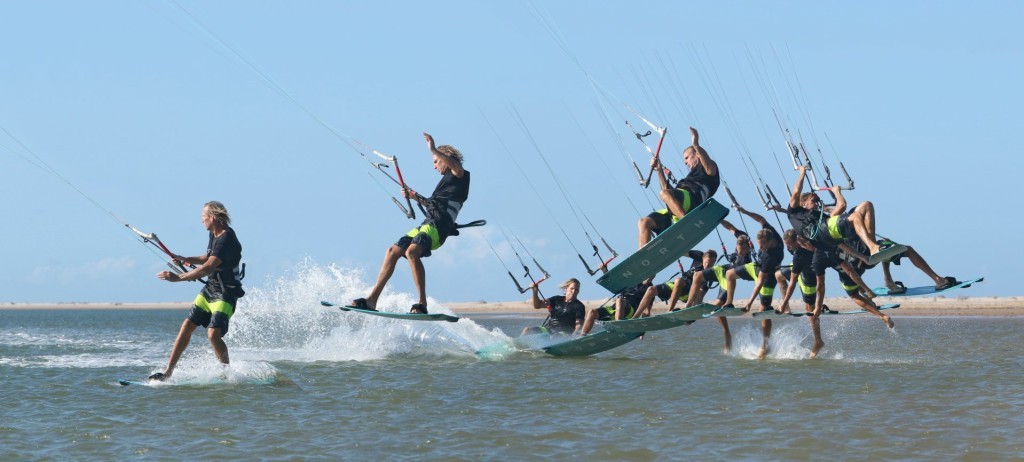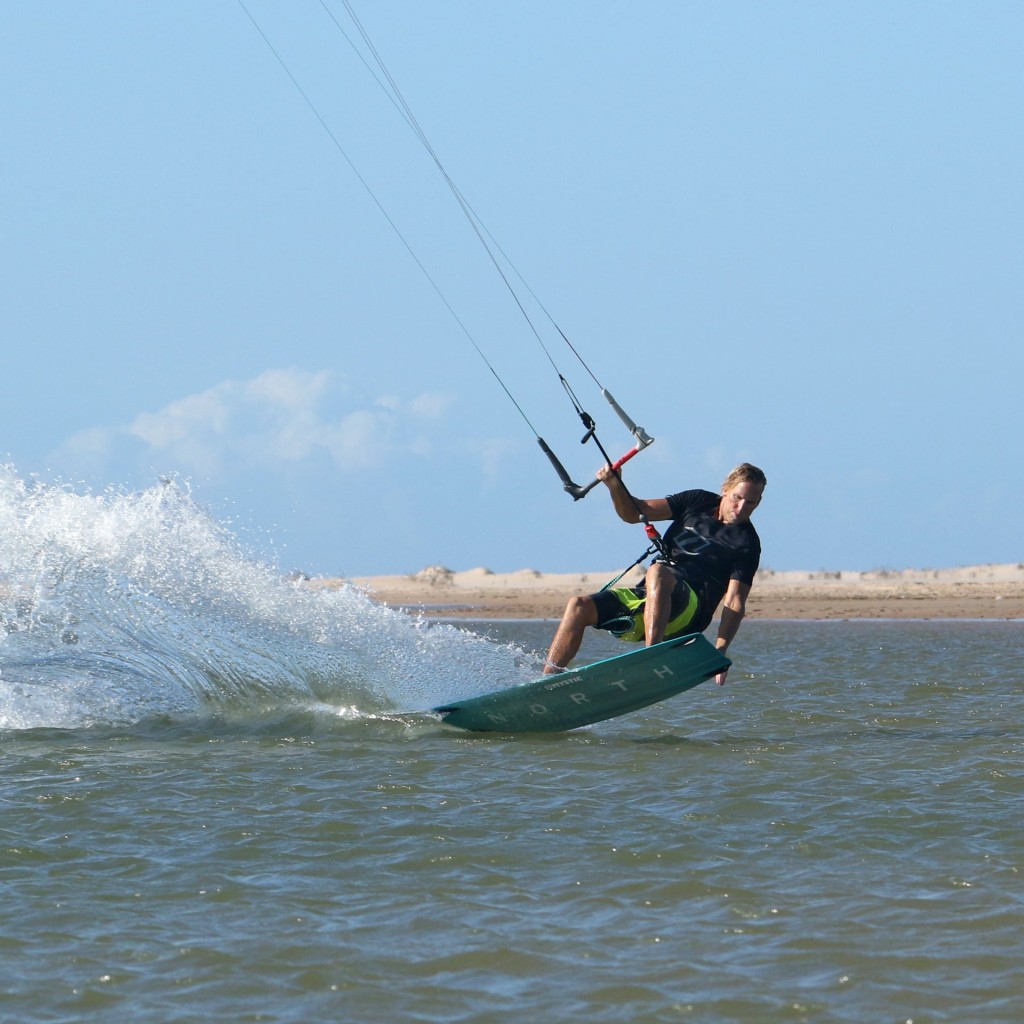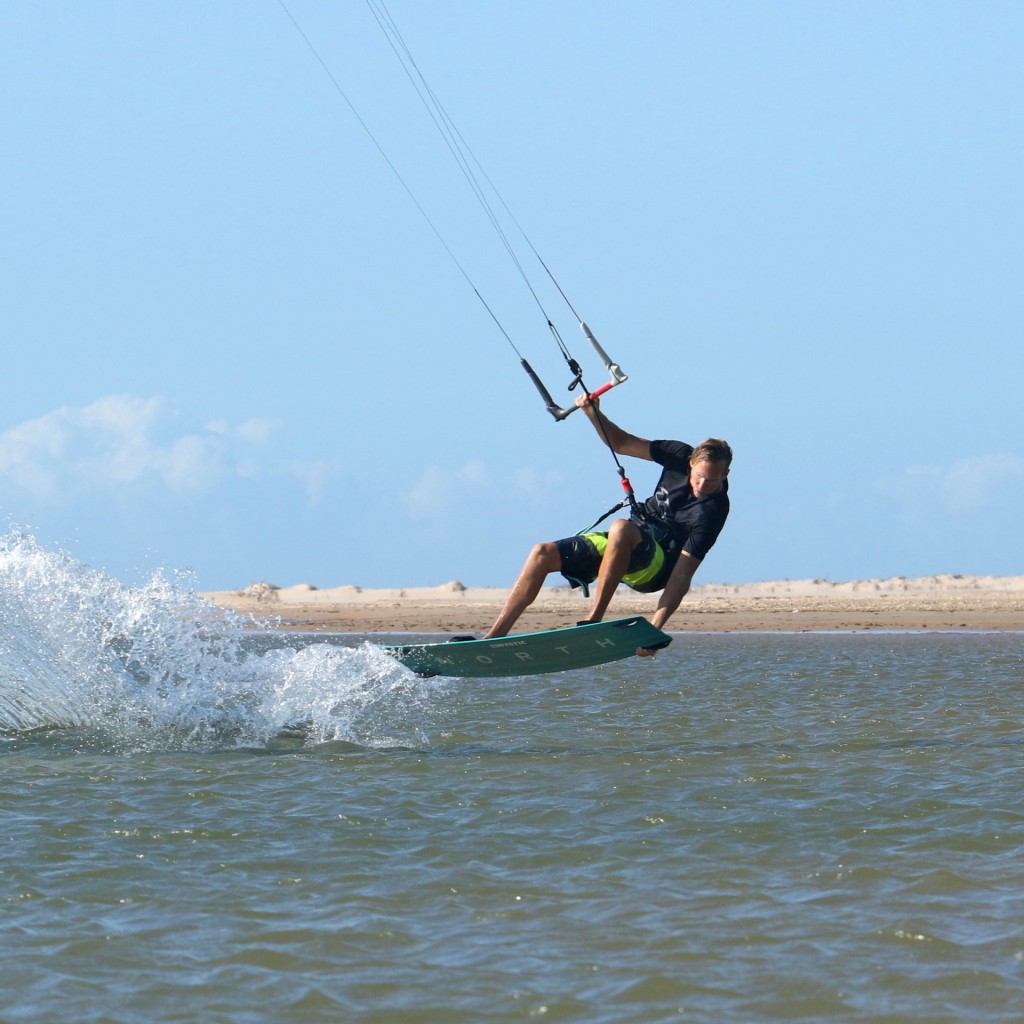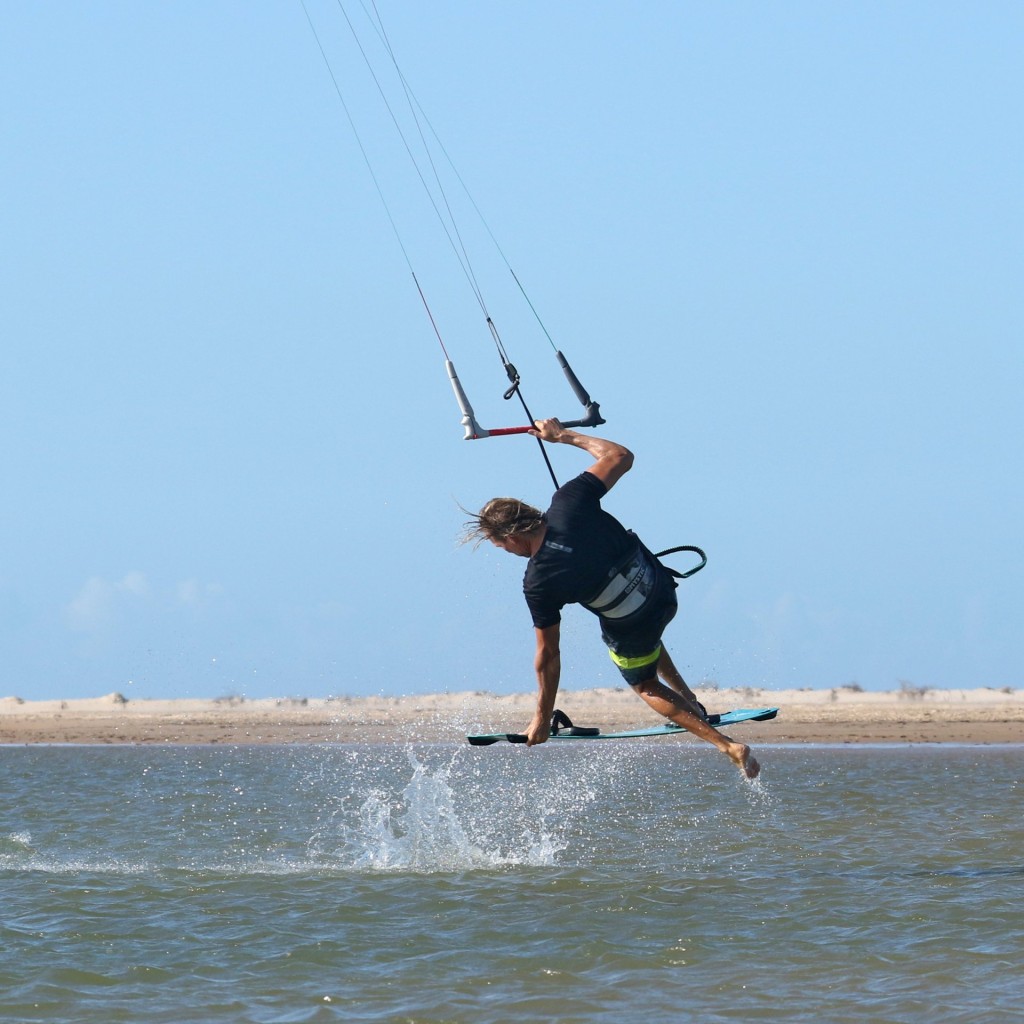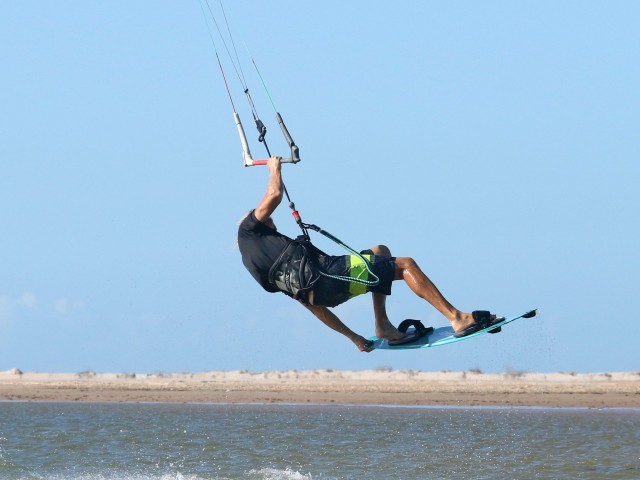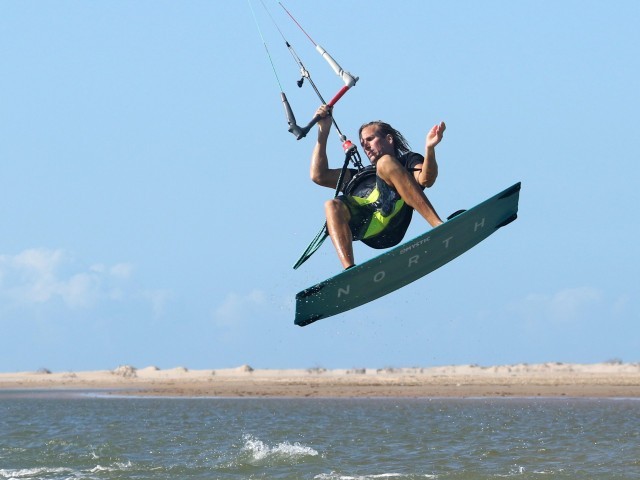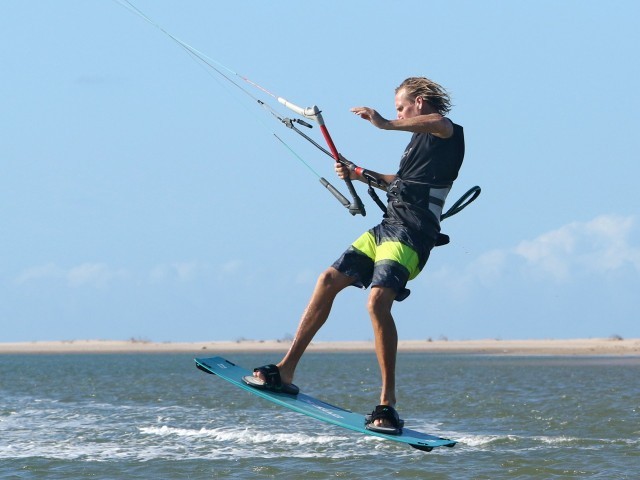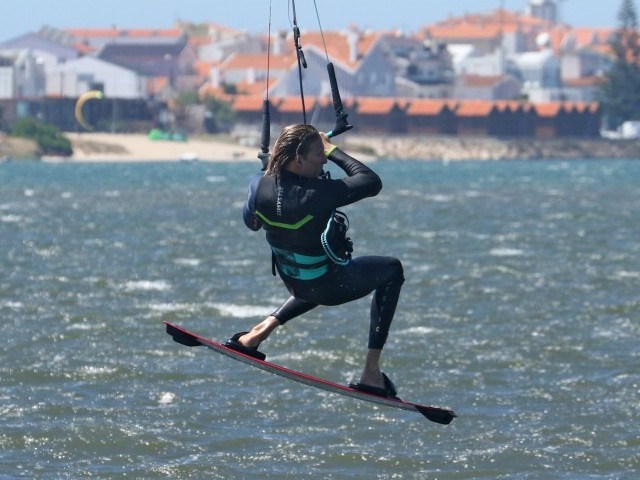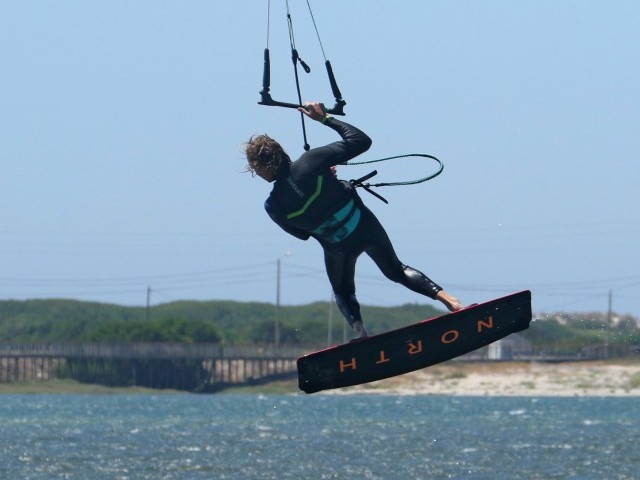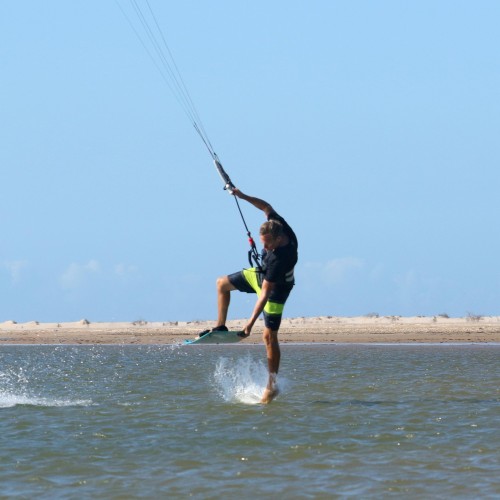
Front Roll Foot Wash Transition
Technique / Intermediate
Introduction
Most of us change direction more often that we do anything else, and that’s why transitions should be celebrated. Here’s one to really tickle your pinkies. The front roll foot wash transition is the antithesis of less is more, squeezing as much into a transition as possible. The base for this move is the popped front roll transition, as it’s all about keeping low to the water so that you can dip the foot in whilst rolling around.
Before we stroll into the key moments let’s have a quick run-down of your set up and approach. Seeing as how you can’t send the kite for height, but rather you’re looking for support, you will need both speed and tension in your lines. This way you’ll have lift when you pop without getting hoiked into the heavens. You’ll require some power, so it’ll be much more tricky if you’re on the underpowered end of the spectrum. Trim your sweet spot up and away from you, but you’ll need to leave some room to sheet out, so that you can control your height.
Once you are ready, approach with speed on a comfortable edge, weight low and back, with your front hand already off the bar. With your back hand centred on the bar slowly drift the kite up and ease the bar out so that the kite doesn’t pull you as it rises, which will also allow you to carve up and pop when it’s time to go.
The Pop Pic A.
Timing is everything, and will depend on how you move the kite, what size it is and how much you ease the bar out. The idea is to try and pop early, latest by the time the kite reaches 12 o’clock, and a tad earlier if possible. The advantage of going early is that the kite won’t wander too far back across the window during the move. Once you get the hang of the kite’s movement, you’ll soon have your sequence of moving the kite and carving up. As you carve up pull in on the bar slightly so that you have something to pop against. Your pop should be the shortest of carves and quickest of stamps against your back foot, momentarily extending your back leg before pulling it back in. This way you’ll leave the water and initiate the front roll, but you won’t be getting any height. As soon as you’re kicking you should be reaching forwards, both looking for the grab and initiating your front roll. Dropping your front shoulder and lifting your front knee whilst kicking against your edge will be enough to get the roll going. In the picture you can see that Christian has his bar in, he’s stamped, and the back leg is already pulling up, he’s almost got the grab on the front fin and he’s throwing his weight towards the nose of the board.
To Do List Pic B.
We’re not suggesting you rush but as soon as you’re off the water a lot needs to happen. You have to get a good hold on the board, get your foot out, control your lift, continue the rotation and steady the kite. You can see that Christian has a solid hold on the board, grabbing his heelside edge near the front fin so that he can already begin to slide his front foot out. He’s also eased the bar out again so that the kite doesn’t lift him, he just wants support. His head and front shoulder remain dropped into the rotation and he keeps his elbow lifted in an attempt to level the bar and prevent the kite moving across and behind him.
The Wash Pic C.
The bit that counts. As soon as your front foot is free, get it in the drink. To wet it, extend your leg and push your foot down towards the water. You may find that you’re too high, in which case you’ll need to push the bar out further to drop yourself. At this point you really need to make sure that you’re not steering the kite back, so keep the elbow up and hand level. Not only does the wash look pretty, it will actually encourage your rotation, much like a back roll hand wash. Your foot acts as an anchor point, around which you’ll spin. Christian still has head and shoulder down, his bar is out but level and his foot is dipped. The end result, he’s turning further into his rotation.
Back to Business Pic D.
As much as we’d all like to drag our foot for eternity until it’s as clean as a whistle and absolutely everyone has noticed, it is in fact the kite which dictates just how long we can hold the pose. The two factors which denote that play time is over are the position of the kite and the lift of the kite. As soon as the kite has drifted too far past 12 o’clock you’ll lose support. That said, you’ll also lose lift and support for a plethora of reasons: if there wasn’t enough power, the bar was too far out, you didn’t have enough speed, not enough tension when popping. Unfortunately, the list is substantial. Either way if you’re dropping down from no height, you need to do something about it, whatever the cause. First off try and get some lift, so pull the bar in a tad. Too far and you’ll stall the kite, so be sensitive. Then it’s a matter of getting your foot back up towards the board. Looking at the photo Christian has pulled the bar in, still trying to keep it level and he’s lifted his foot out of the water and is looking at the foot strap where he intends to stick it.
Foot In Pic E.
With the bar in and a moment of support gained you can ignore everything else and watch your foot back in. Try and get it snugly into the strap, pull your hand towards you as you push your foot in. Once it’s firmly in you’ll be able to take most landings, no matter how imperfect. With a loose foot you won’t have the same confidence. Keep the bar in for support. As Christian does the above, he’ll feel that the kite is starting to move far across the window, but at present he’s just worried about getting his foot in...
Take Control Pic F.
As soon as your foot is in you’ll play a bit of catch up so that you can get back in the driver’s seat. First off, it’ll be considerably more pleasant if you can see where you’re going, so turn your head and look where you want to go, which is downwind. This will finish off the rotation, give you your bearings and set you up for landing. Next up is sorting the kite. You need it to pull you out of the move. In a perfect world you’d dive it from 12 o’clock and bingo, job done. However, there’s an extremely high likelihood that the kite will have drifted quite far back towards the edge of the window, so you’ll want to give it a hefty pull, to not only dive it, but add a late and small kiteloop. Much the same as in many support moves, think darkslide et al. You can see that Christian has turned his head, which has allowed him to come around the rest of his front roll and get his bearings. He’s got the bar in on the sweet spot and is giving the bar some very positive instructions.
Touch Down Pic G.
This is what we’re after, a soft tail first down wind landing. The secret to this is all in the kite and timing. If you’re too greedy with the foot wash and therefore the kite drifts too far back, you’ll be pulled across the window and land on your heelside edge which will only complicate things further. If you manage to keep the kite above you, you could even get away without a loop, just a pleasant and hefty dive. Sacrificing a bit of show for a stomped trick seems reasonable. Christian is coming in with a bit of speed and power on this one, but with the kite pulling from downwind and the board pointing downwind it’s extremely claimable.
Top Tips
Baby steps. As we say each issue, start off with the base move to get used to the timing, conditions and kite. Here it’s s popped front roll transition, then with a nose grab, then with a one foot and finally with a foot wash.
Loosen your front foot in the strap by wiggling it free a touch before the trick. You don’t need to be wrestling your foot out when time is of the essence.
Consider this a truly one handed trick. There is an innate temptation to grab the bar with your free hand as soon as you have the foot back in. Try to avoid this urge, as generally your body and bar won’t be aligned and you’re likely to grab the wrong side of the bar.
Now have a look at the sequence and videos for the move in full.
Common Problems
If you’re struggling to get your front foot out. Assuming that you’ve wiggled it loose, the reason will be that you’re not lifting the back leg post stamp. With your back leg straight, the strap will grip your front foot, so make sure that you lift the back leg as soon as you’ve popped.
If you’re falling onto your back and not completing the rotation. This is a sure sign of the kite flying too far back. Firstly, make sure you’re popping early. Then make sure that you’re pulling the bar in to pop and finally make sure that you’re not completely dumping the power during the move. Feather the bar whenever you let it out, don’t aimlessly let go of all your power.
Spinning too far around. Once again, your kite has drifted too far back. If you’re consistently getting around but facing too far back the other way, try pulling and steering the kite harder as soon as the back foot is in. This will encourage the kite to pull you from a higher position, and therefore it’ll pull you more downwind.
Landing across the wind with too much power. If you’re getting drilled it’s because your concentrating too much on looping the kite, rather than adding the loop late. As soon as your foot is in, you’re giving it the beans and suffering the consequences. Try delaying your pull to chill things out a bit.
Keystones
- Power, speed and edge
- Drift kite, 1 hand, carve
- Pull, mini pop and kick forwards
- Bar out, foot out
- Bar in, foot in, turn head, dive
This technique article was in Issue 82 of IKSURFMAG.
Related
By Christian and Karine
Christian and Karine have been working together as a coaching team, running improver to advanced kitesurfing clinics since 2003.






